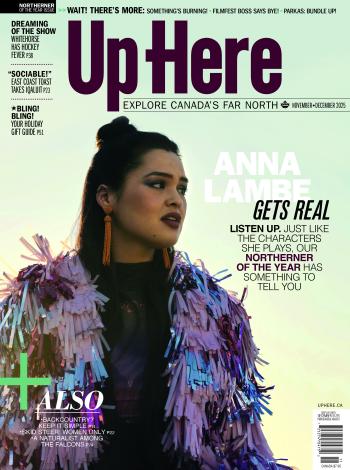The Arctic doesn’t look like it used to. Temperatures are rising and sea ice is melting. That’s why the company SmartICE is combining traditional knowledge and new tech to measure ice while tracking the effects of climate change.
Ironically, it’s due to climate change that Rex Holwell is unable to fully do his job. By late January, he’s still waiting for the ice to be thick enough to deploy the sensors called SmartBUOYs. “This year has been unseasonably warm. Right now, it’s minus three. It should be minus 23,” says Holwell. “Last year was really strange for how late the ice freeze was and this year is even stranger.”
A lack of solid ice is detrimental to Nain, a community of about 1,100 people in northern Labrador, as the frozen waterway acts as highway as well as hunting and fishing ground. So, although Holwell can’t stop the ice from melting, he tries to keep this place safe, while helping its youth flourish.
Holwell is the northern production and regional operations lead with SmartICE. His job starts at the production centre, where over five weeks he teaches people between 16 to 30 years old how to activate and deploy SmartBUOYs as well as the mobile sensor called SmartQAMUTIKs.
Holwell will then call on a few trained students who set out on their snowmachines, with SmartQAMUTIKs in tow, to find a solid stretch of ice. They’ll drill a hole and anchor the SmartBUOY device inside, where it measures the thickness of the sea ice. That data is added to an app called SIKU, for the public to check in with before venturing out. Holwell also prints maps and pins them throughout town for those without internet access.
While SmartICE is currently working in Nain, Pond Inlet and Gjoa Haven, executive director Carolann Harding says they plan to expand to the Northwest Territories and the Yukon. By adding the two territories, SmartICE will hire far more locals, while also collectively learning about how climate change impacts all of northern Canada.
But for Holwell, it’s about more than that; it’s about how traditional knowledge and modern technology can intermingle, and sharing those innovations with others.
“I don’t ask people to rely on our technology just by itself,” he says. “I ask people if they have traditional knowledge and a tech-savvy side to access this information. Maybe they can help spread their knowledge. People can merge two kinds of knowledges to find one safe route.”









